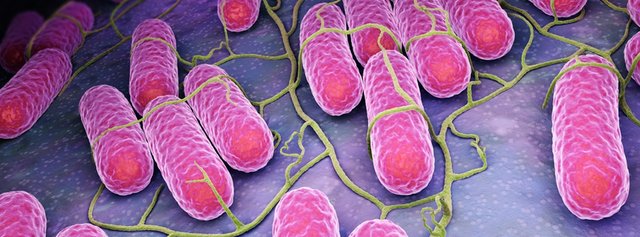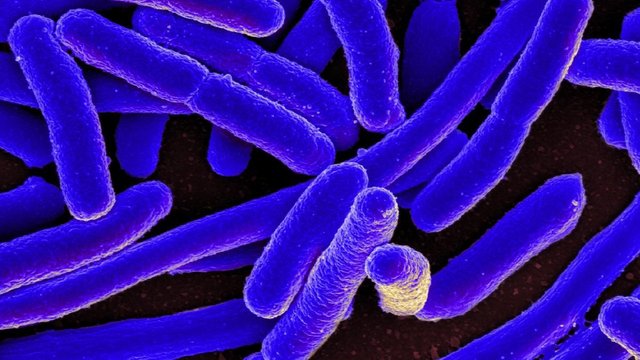Common bacteria to produce dyes/Bacterias comunes para producir colorantes

Source
Since its inception, human beings have used dyes and colorants both to dye their clothes and to decorate their bodies or caves, in fact remains of solidified dyes from the Neolithic period have been found more than 10,000 years ago and it is known that India and China have been using the dyes for more than five thousand years without interruption.
Desde sus inicios los seres humanos han utilizado los tintes y colorantes tanto para teñir sus ropas como para decorar sus cuerpos o cuevas, de hecho se han encontrado restos de tintes solidificados del periodo Neolítico, hace más de 10.000 años y se sabe que India y China han estado utilizando los tintes durante más de cinco mil años ininterrumpidamente.
At first the dyes could only be obtained by natural means, extracting them from plants. of insects such as mealybugs or mollusk shells as the Persians did to get their purple robes that were the envy of the Mediterranean, curiously 8,000 of these shells were needed to make a single gram of dye so it was only available to royalty.
Al principio los tintes solo podían conseguirse por medios naturales, extrayéndolos de plantas. de insectos como las cochinillas o de conchas de moluscos como hacían los persas para conseguir sus túnicas púrpura que eran la envidia del mediterráneo, curiosamente se necesitaban 8.000 de estas conchas para fabricar un solo gramo de tinte por lo que solo estaba al alcance de la realeza.

Source
Until the mid-nineteenth century, natural dyes were the only option until a young chemistry student named William Perkin created the first synthetic dye in 1856, coinciding with the advancement of the textile industry, so young Perkin managed to amass a good fortune with his discovery.
Hasta mediados del siglo XIX los colorantes naturales eran la única opción existente hasta que un joven estudiante de químicas llamado William Perkin crea en 1856 el primer tinte sintético, coincidiendo con el avance de la industria textil por lo que el joven Perkin consiguió amasar una buena fortuna con su descubrimiento.
But in the elaboration of these dyes, very toxic substances are used that can escape into the environment with the consequent damage, current consumers much more aware of environmental problems demand products manufactured in a natural way, but given the quantities we use, natural dyes are not very sustainable either.
Pero en la elaboración de estos tintes se utilizan sustancias muy tóxicas que pueden escaparse al entorno con el consiguiente daño, los consumidores actuales mucho más concienciados con los problemas medioambientas demandan productos fabricados de forma natural, pero dadas las cantidades que utilizamos tampoco son muy sostenibles los tintes naturales.

Source
That is why a group of scientists from the Korea Institute of Advanced Sciences and Techniques have proposed to genetically modify specimens of Escherichia Coli to make them manufacture seven different natural dyes, they not only had to genetically modify the bacteria to produce the dyes but also had to help them excrete those dyes to be used.
Por eso un grupo de científicos del Instituto de Ciencias y Técnicas Avanzadas de Corea se han propuesto modificar genéticamente especímenes de Escherichia Coli para ponerlas a fabricar siete tintes naturales distintos, no solo tuvieron que modificar genéticamente la bacteria para producir los tintes sino que también hubo que ayudarlas a excretar esos tintes para ser aprovechados.
The leader of the group of scientists affirms that this dye production system does not produce any toxic residues so it could be used to create food dyes without risk to health and begin to be used at an industrial level, although some of the colors are more difficult to synthesize so they can be somewhat more expensive.
El líder del grupo de científicos afirma que este sistema de producción de tintes no produce ningún residuo tóxico por lo que podría utilizarse para crear colorantes alimentarios sin riesgo para la salud y comenzar a utilizarse a nivel industrial, aunque algunos de los colores son más difíciles de sintetizar por lo que pueden resultar algo más caros.
More information/Más información
https://onlinelibrary.wiley.com/doi/10.1002/advs.202100743
Hola @mauromar, este invento sí que es raro y genial.

Todo lo que cuide el planeta es bueno.
Hello @mauromar, This that I read in your post has surprised me a lot, I did not imagine that an abacterium as feared as Escherichia Coli could be useful for obtaining dyes, I would like to know a little more about this delicate process.
Good post.
Thank you for your comment @tocho2, scientist know very well E.Coli bacteria DNA and they can do everything.
Hola @mauromar, eso suena como medio asqueroso, por esa razón muchas veces es mejor ignorar el procedimiento de algunos productos.
Ojos que no ven... ;-D
Interesante saber esto y alentador ya que uno de los colorantes que más consumimos es el amarillo #5 el cual hace bastante daño.
Important item Thank you.
It is interesting to see how the dyeing technique has improved over time.
everything has a good sight and bad also, bacteria is also same.
That's a good story.
Colorants are really needed, now they are also very widely used in food.
Inventing the synthetic dye is an epic era in textile industry. But i know about the bacteria for the firat time from your blog. Thanks for sharing.
I didn't know about the bacteria like this before, thanks for the information.